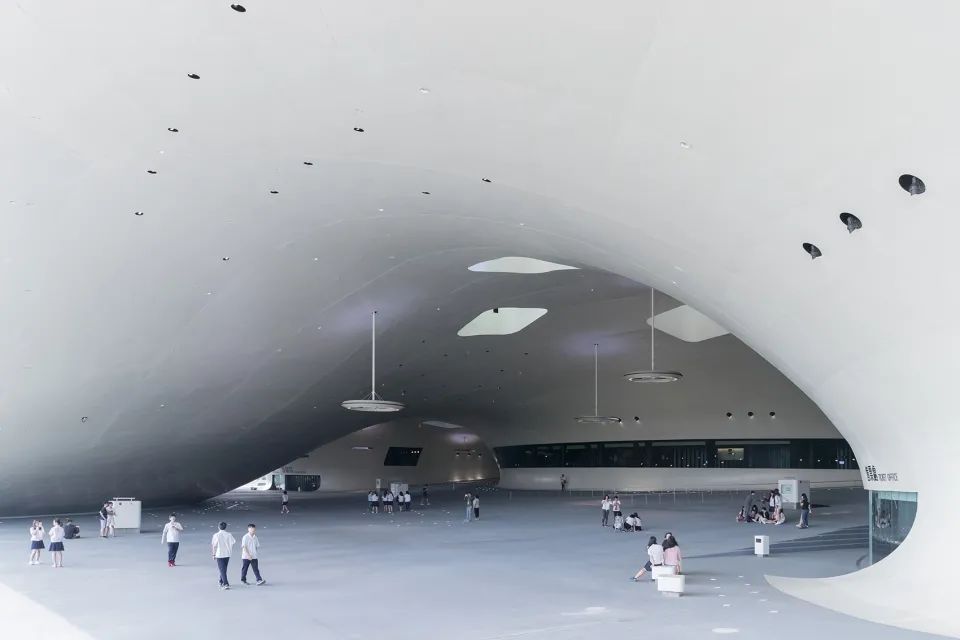In recent years, a group of Vietnamese architects have attracted attention from Asia and even the world, serving as another model for the construction of modern architectural culture in Southeast Asia. Wu Zhongyi is one of the outstanding artists, with works covering three aspects: bamboo architecture, green architecture, and low-cost housing. Among them, bamboo architecture is the most unique. The arches, domes, umbrellas, spatial grids, and other structures woven from raw bamboo are very creative and coordinated with the climate of the Vietnamese rainforest..
The Vietnamese region is prone to high temperatures, humidity, and insect infestations, and there are few suitable woods for construction. However, bamboo is abundant in production. As an ecological material, it has low acquisition costs, good tensile strength, and better elasticity than wood. After industrial treatment, bamboo can be used for more than 30 years. In China, bamboo is mostly used for rural buildings, temporary buildings, etc. In Vietnam, bamboo has become one of the important building materials in urban and rural construction..
As a fundamental element, “components” are the medium that connects materials and architecture. No matter how the bamboo structure of Wu Chongyi changes, he always conforms to the performance of bamboo and creates basic elements that are suitable for bamboo structure creation through methods such as bending, binding, and modularization..
To improve the performance of bamboo, it is necessary to prefabricate it and solve problems such as inconsistent specifications and pests and diseases. The individual differences of the original bamboo are very strong, and even for the same bamboo, the cross-section from the end to the top is constantly changing, and the original bamboo cannot be cut and flattened into standardized components like the original wood. In order to achieve rapid and standardized construction, as well as refined structure, Wu Zhongyi adopted a unique preprocessing method: 1) grilling bamboo while bending it, tying it into bundles and fixing it in shape. 2) Soaking bamboo in water for 3-6 months can cause the internal fibers to deteriorate. This method can make bamboo insect resistant and more flexible. 3) Perform fumigation treatment and apply oil on the surface of bamboo while heating to give it a unique brownish red color. 4) Combine bamboo bundles into components according to structural requirements, and then assemble them into modules. When combining modules, designers use methods such as juxtaposition, knotting, and array to create a strong sense of order in the structure..
Based on the processing of the above component elements, Wu Zhongyi created various types of bamboo structures, including arches, domes, umbrellas, and spatial grids. Natural materials, traditional and modern craftsmanship blend together, and the delicate and lightweight structural shaping makes the bamboo architecture very harmonious with the local landscape and climate..
An arch is a curved bracket that serves as a support. Bamboo is prone to bending, and arches are a structural pattern that is easier to achieve in original bamboo. There are two main types of arch structures shaped by Wu Chongyi: cylindrical arches formed by bending ultra long components and pointed arches formed by splicing bending components..
Weaving small section bamboo into large-scale domes requires a relatively complex construction method and also consumes a large amount of bamboo. Therefore, it is necessary to explore suitable methods to improve construction efficiency..
Although the bamboo dome structure of Wu Chongyi is complex, it follows a certain construction logic. Taking the Sen Village Community Center (built in Dehe, Vietnam in 2015, Figure 11) as an example: Firstly, based on the shape and size of the dome, the bamboo is prefabricated and bent into the required shape and combined into modules, each module component is assembled by multiple sets of bamboo bundles. Secondly, based on a circular plane and in accordance with structural design and scale requirements.


